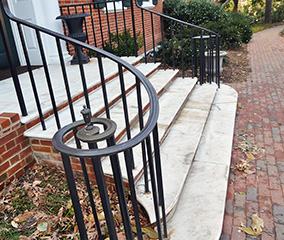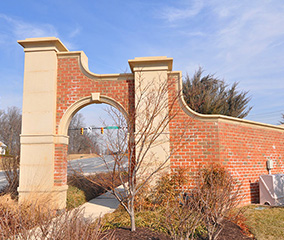
Though often used interchangeably, tuck-pointing and repointing are two different methods of brick masonry restoration!
Brick is a very durable masonry material and can last for years with little maintenance. However, just like anything else, it can start to wear down over time. After a while, you will be in need of masonry restoration. Often times, people interchange tuckpointing and repointing, two common types of brick masonry restoration, but they are actually different from one another.
Tuckpointing
This method of brick masonry restoration uses two different colors of mortar to refill damaged mortar joints or just to give your existing brick masonry a nicer look. The first color is made to blend in with the bricks so that you can’t really see it much at all. The second color is for the mortar joint themselves, so is more of a white color. This method makes the mortar joints appear to be thin because you can’t see the brick colored mortar. People tend to choose this method of masonry restoration when they are trying to mimic the look of high-end rubbed bricks for less money.
Repointing
The main difference between tuckpointing and repointing is that repointing is specifically for damaged bricks. The process of repointing fills in or replaces mortar joints that have been damaged, crumbled, or cracked. Repointing does not give the brick masonry a different look or make the joints appear to be any thinner. The sole purpose of this masonry restoration method is to fix what has been broken.
Signs That You Need Repairs
The mortar joints in brick masonry can start to show damage within 20 to 30 years of being constructed. Here are some signs that your brick masonry may need repairs:
- Mortar erosion is more than 6mm
- Crumbling mortar
- Small cracks in the mortar
- Cracks or gaps in between the bricks themselves
Contact Del Prete Masonry Today For Your Masonry Restoration
If you are ready to upgrade your home or commercial building with professional masonry installation or replacement, Del Prete Masonry has the experience and expertise to get the job done right for the right price. To explore our residential and commercial services and set up a consultation, please give us a call at 410-683-0650 or contact us online. We currently serve Baltimore City and County, Harford County, Carroll County, Anne Arundel County, and Howard County. To see examples of our work and get more updates, follow us on Facebook, Twitter, Google+, and Pinterest






































